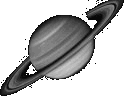|
Oh, boy. Yasir, to answer all these questions I have to cite a few physics courses here almost from cover to cover. Do you have a good (better calculus based) textbook on general physics around your place? With some introduction into electrodynamics, SR (special relativity),intro into QM (quantum mechanics), atomic/plasma physics and GR (general relativity)? College-level (although I do not know what is college level in Pakistan). Or anything at all?
If you do have anything, tell what you have - it would be much easier for me to then NOT TO COPY what you already have (just too long).
In short, all visible, UV and X-Ray telescopes only see radiation from OUTSIDE Schwarzchild radius R=2GM/c^2. Our Milky Way black hole (very big one by the way - 5 million Suns in mass) is only 20 times bigger than Sun in size, so from 30 thousand light-years it is only 5x10-11 radians in angular sise, or about 10 microarcseconds. Best optical telescope (10 meter Keck on Mouna Kea) has resolving power lambda/diameter = 0.5 micron/10 meter = 5x10-8 (at absolutely still air conditions, which is extremely rare) or 10 milliarcseconds. So this is thousand times worse than the size of black hole, so it can only see far periferal part of accretion disc. Hubble 3-m eye is even 3 times worse, but it does not depend on good weather. There are a couple of closer black holes, but they are much smaller. So all we can see in some details is doppler shifted radiation from far edges of hot accreting whirpool of hydrogen falling on black hole. But this is enough to calculate mass of black hole.
UV images by Hubble are made using uncoated CCD. UV and X-ray images can only be made outside absorbing atmosphere. X-ray images are made by variety of technics. For soft x-rays CCDs work well, but for hard x-rays they become transparent and thick scintillators are used. Resolution is much less.
Optics - there is no x-ray reflecting materials, so either glancing angle optics is used (wide bandwidth, but small apperture) or multilayer mirrors (which can have big apperture but only reflect narrow band).
Clocks slow down near (or inside) black hole because they are in different gravitational potentials (thus run different due to general relativity) and in different state of motion (thus run different due to special relativity).
I think, for two free-falling observers inside black hole the clock of the one closer to center runs slower. But I am not firmly sure. Anyone (Bruce?) to discuss which clocks seem to run faster inside black hole (and which meter stick is shorter?) for two free-falling (or nor free-falling) observers?
If hole rotates, then singularity becomes a ring.
What is going on inside singularity - I do not know. May be somebody else around does? Bruce?
|



